Herbs and Spices for Cooking Italian
Cooking Italian is not difficult, although there are some important not to be missed spices and herbs to use. Whether you use fresh or dried spices depends on the dish and sometimes what you prefer. So if you are looking to add some Authentic Italian recipes to your everyday or even weekly meals, I hope this helps.
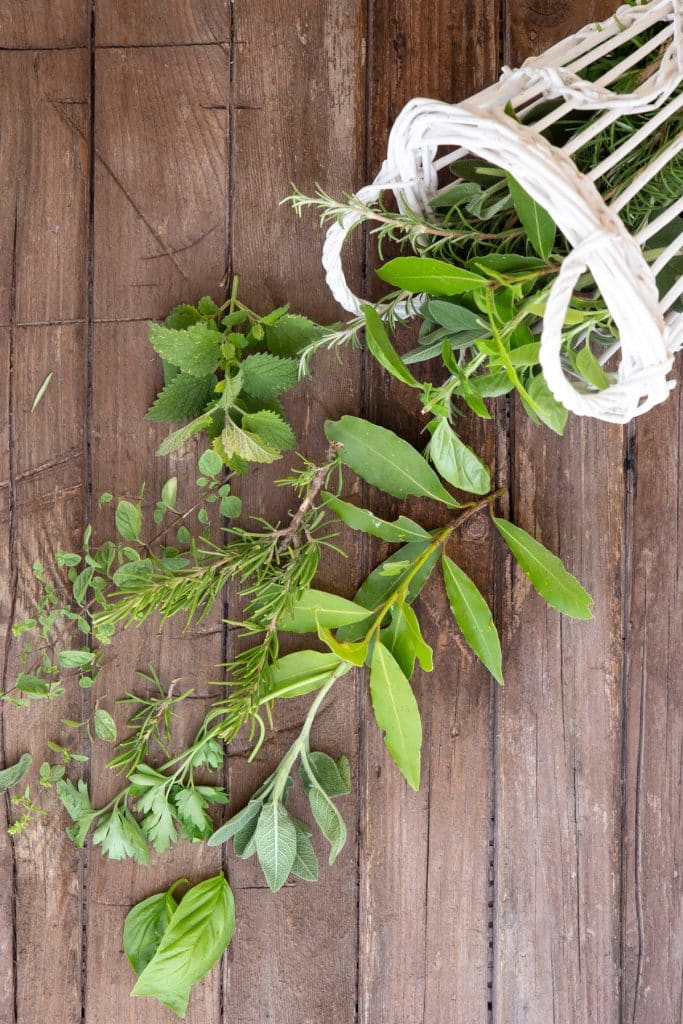
Essential herbs and spices in an Italian kitchen
- Salt
- Basil
- Oregano
- Parsley
- Garlic
- Bay Leaf
- Hot Pepper
- Rosemary
- Thyme
- Nutmeg
- Pepper – black or white
- Sage
- Mint
Salt
Table salt is a cooking ingredient, made up almost entirely of sodium chloride. It is colorless with a bit of an odor and a defined taste. In Italy, it is mainly purchased in the form of coarse salt or fine salt, depending on the size of the crystals, and in “sea salt”, or rock salt, depending on the type of production.
Basil
Very popular in the Italian kitchen, it has green, silky and tender leaves. Originally from East Asia, it is also widely cultivated in Italy. It is used to make sauces, and of course Genovese pesto and Tomato Sauce, but it is also excellent for soups such as Lentil Soup, Minestrone and vegetables, cooked and raw.

Oregano
Is a small shrub very common throughout Italy, it forms large bushes with stems full of tiny oval leaves. In the summer it is full of pink, very fragrant small blossoms. It is used to flavor everything from Neapolitan pizza to Caprese with tomatoes. It is also good on Eggplant, squash, meats, fish and cheeses.

Parsley – Italian flat leaf
There is a famous proverb “you are like parsley!”, (“sei come il prezzemolo!”) meaning that parsley is good almost everywhere. In fact it is probably the most used and important spice in Italian cooking. It can be bought fresh or in the dried form and is used on many dishes, including Fish, vegetables, sauces and some meat dishes.
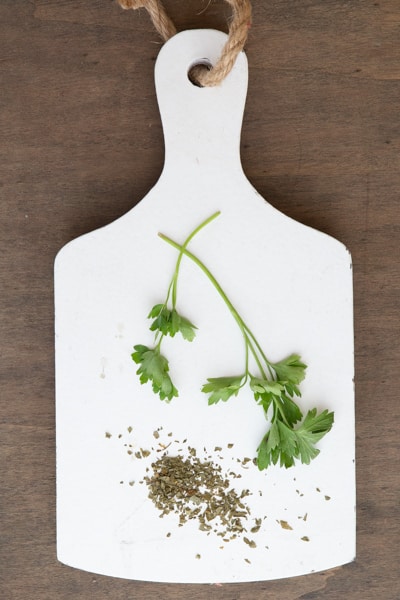
Garlic
The varieties of garlic are different, the most common are white, pink and purple garlic. It is widely used and is healthy for you. It can be found all year round, but the best time to stock it is certainly at the beginning of summer, when its bulbs are full and compact. It can be dried and stored throughout the year, or it can be purchased already in granular or powdered form.

Bay Leaf
Also called laurel, it is an evergreen tree typical of the Mediterranean regions. The whole leave is used, preferably dried, because when it is used fresh it is a bit bitter. It is excellent in marinades or for flavoring meat (braised meat and game), fish and legumes. It is also used for Sauces and preserves in oil.
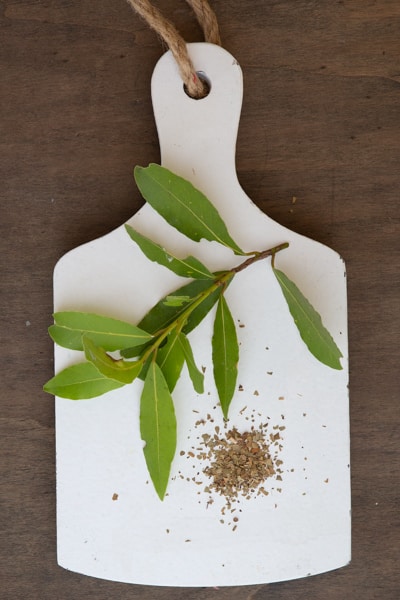
Hot Pepper
In Italy and around the world everyone knows the simple dish spaghetti with garlic, oil and pepper flakes. However, this spice, is used in many other regional recipes. It can be used fresh or dry, in sauces, gravies, soups and to flavor any recipe, from vegetables to meats to fish. It can be cooked into the recipe or used to spice up an already cooked dish.
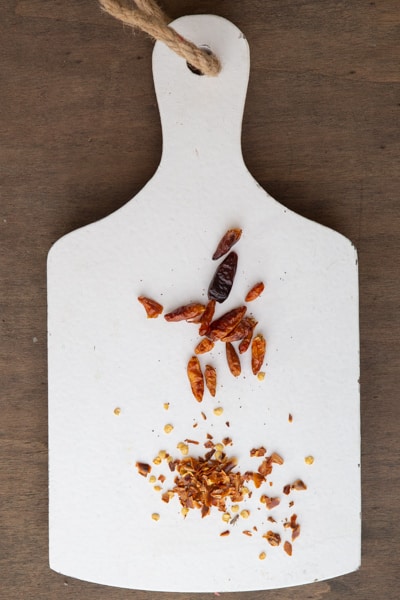
Rosemary
It is perfect for seasoning meat or fish dishes, essential for Roasts and Potatoes, rosemary can be used fresh or even dried and preserved.

Thyme
Thyme leaves, either fresh or dried, can be added to salads or legume soups, even on grilled vegetables, meat and fish dishes.
Nutmeg
Ground nutmeg has a particular woody scent and a sweet interesting taste. It is mainly known to be used in cannelloni, ravioli and some sweet recipes. Sometimes it is added to meat recipes such as meatballs and meatloaf.

Pepper
Pepper comes from dried, unripe (black pepper) or ripe peeled (white pepper) grains (corns) from a tropical fruit vine. In grains it maintains its aroma better. The black and white ones are ground and used to give flavor to all types of savory and some sweet dishes.
Whole grains flavor marinades and brine, but also add flavor to broths. They are also used in the preparation of different types of cured meats and the famous Cacio e Pepe.
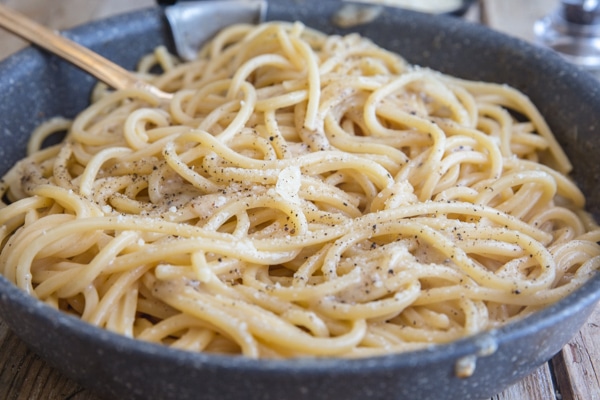
Sage
Is a bushy perennial herb. It has velvety, green-gray leaves, they are very aromatic. It is used in many ways, but it is excellent for quick preparations of white meat (Saltimbocca, escalopes) and gives an excellent flavor to melted butter, for cooking liver or for dressing Stuffed Pasta or Gnocchi.
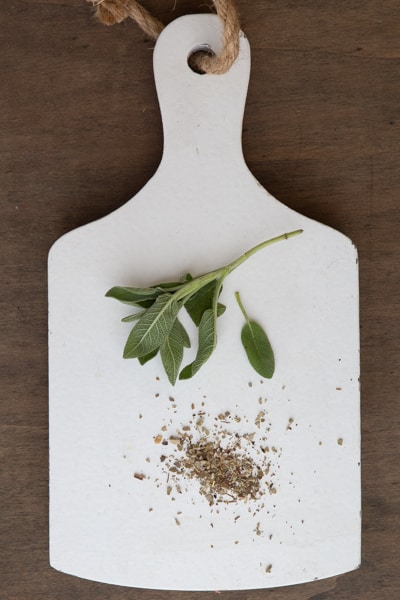
Mint
Mint is cultivated throughout Europe. It has delicate scented leaves and a refreshing and anti-nausea effects. It goes wonderfully with zucchini, Artichokes, omelettes and fruit salads. It enhances the taste of ice creams and sorbets. It is also used to prepare tea and delicious drinks, such as Sangria.
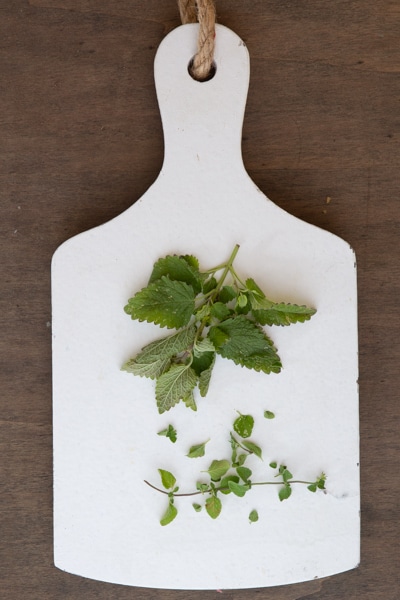
Are Oregano, Thyme and Marjoram similar?
Yes they are quite similar, which makes them good substitutes for each other. The differences being that Marjoram is milder and sweeter than oregano and Thyme has a bit of a spicy undertone.
What’s the difference between herbs and spices?
Both herbs and spices come from plants but herbs are the fresh part of the plant while spice is the dried root, dried stalk, seed or dried fruit of the plant and it is almost always dried and not fresh.
Fresh or Dry Spices
Some herbs work best fresh and others when they are dried. The reason being is that some herbs lose some of their flavors when dried. But dried ones with a stronger flavor work best in recipes such as stews and soups because they infuse their flavor throughout the dish.
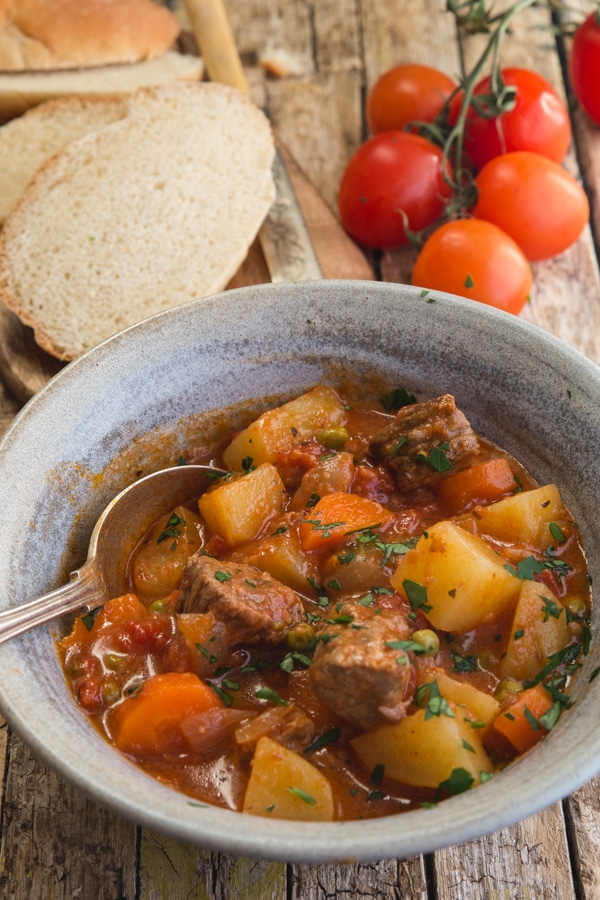
Fresh herbs work best when used to finish a dish and should be added near the end of cooking. Some chefs and gourmet cooks believe that you should not use fresh herbs when a dish takes more than 45 minutes to cook.
Fresh mint, parsley and basil should be added towards the end of cooking for best effect. Bay leaves, oregano, rosemary, thyme and sage should be added during cooking for maximum effect.
How to pair herbs and spices
For example, Rosemary, sage, and basil are aromatic herbs typical of Mediterranean cuisine. Typically used in recipes that involve cooking in the oven or on the grill, inserted directly into the belly of the fish, or to prepare sauces served on the table.
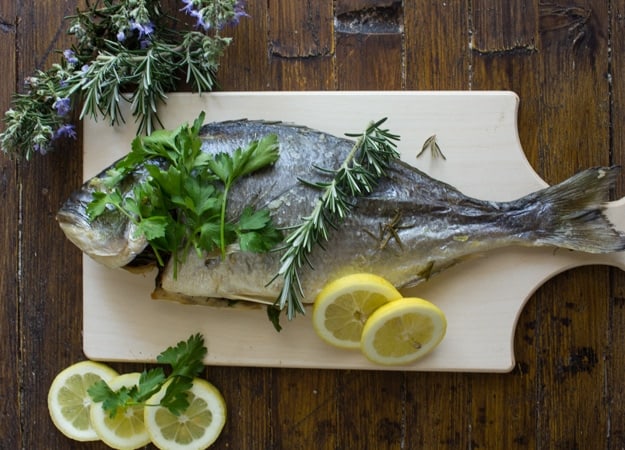
Parsley is probably one of the most used herb in fish recipes in Italy. Also added to tomato dishes, seafood salads or fish stews.
Oregano gives a wonderful aroma to dishes (one of my favorites, and as my sister says, without it, I couldn’t cook!) It is widely used in Italy and works in so many different dishes, such as salad with tuna or in stews, sauces, and dishes such as pizzaiola.
How to grow herbs and spices
Aromatic herbs are interesting and fun plants to grow. You can place them in flower beds or a vegetable garden. Or even in pots on the balcony. In general, they are rather simple plants to grow. They are adaptable to climate and soil, do not have major problems with parasites, and are not very prone to diseases.
They do require moderate fertilization, especially perennial species.
Most of the herbs are perennial crops, and once planted, they remain; this means that after planting and once grown, you will always have fresh herbs ready to flavor your favorite dishes. The hardiest of the plants being sage, thyme, and rosemary, they do not fear winter and will remain evergreen. They can tolerate a temperature no lower than 30F/ 0C.
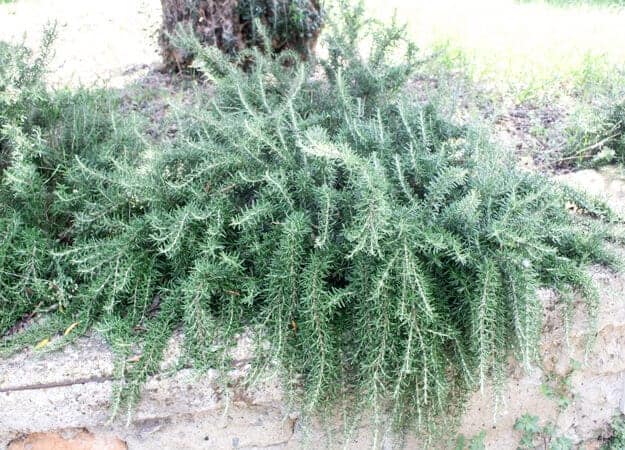
Other aromatic plants which are annual are basil and parsley. They can stand a bit of the cold but not winter. Therefore, they must be re-sown every year.
When deciding where to grow the herbs, be aware that it is important to have them close at hand, near the kitchen if possible, so that the freshly picked leaves can be used easily and within reach when flavoring dishes.
Aromatic herbs are mainly small shrubs or bushes, and they can also be grown in pots on the balcony, patio, or windowsill. To allow the herbs to grow properly, be aware of the correct soil and fertilization.
How to dry herbs and spices
Not all plants are the same, and drying can have a different effect for each; some perfectly retain their scent and color, while others lose them and turn gray when they dry out.
Rosemary
Rosemary is a very simple herb to dry. It retains practically all of its scent, and even its green needle-like leaves remain. Being an evergreen plant, it is readily available all year round to be picked fresh. Drying it can be used to mix with other spices and in flavored salts.
Thyme, bay leaf, and sage
These plants, like rosemary, have leaves that are well structured. Therefore they can be dried with excellent results.

Oregano and marjoram
These are two other plants that dry without difficulty and lose a little on the appearance side, but they will still retain their wonderful scent. They are two of the most widely used spices, especially oregano, which is essential on pizza.
Parsley and Mint
During drying, the color of the leaves of these herbs change because they are quite delicate. The quality when dried is also significantly lower than when they are consumed fresh.
Basil
Basil, like all herbs, can be dried, but it loses most of its flavor. It is so much better when consumed fresh. Unfortunately, it is a seasonal plant, and for most, we must adjust to the dried plant during the winter months. Or a solution can be to make jars of pesto to freeze or conserve the fresh leaves.

Different ways to dry them
Open air drying
If you are picking herbs by cutting twigs, you can tie them together, make bunches, and hang them upside down. If the herbs only have leaves, they must be placed on a grate or a tightly meshed net. In other words, in both cases, air must be able to pass freely, which will remove the moisture and therefore dry the leaves.
The important thing is you must find the right place for drying; it must be well ventilated and not humid. Sunlight is not the best for drying, it can reduce time but it can also affect the quality of the outcome. The perfect space would be an open porch, if you choose a spot inside the house, it will need to be ventilated often. The only drawback of air drying is that it can take quite a long time.
Oven Drying
To dry the herbs in the oven, you must set the lowest possible temperature; the spice quality will be lowered if a higher heat is used. For oven drying, place the herbs on a cookie tray, they must be turned and checked often while drying, so that they don’t burn.
The times can vary but it is much quicker than air drying, although the quality of the dried herb is not as great. It is best to leave the oven door slightly open to allow the moisture to escape.
Food Dehydrator
This is probably considered the best method for drying herbs. When drying small leaves, the dehydrator must be set so that the fan does not blow the leaves too hard. The times can be longer than when drying in the oven, but of course, it is a lot quicker than air drying.
How long does it take to dry herbs?
It is not possible to give definite times because you have to take into consideration the humidity of the air, the type of leaves, etc. Although it is easy to recognize when the herbs are dried. When you touch the leaves, and you hear that distinct rustle sound or when they crumble between your fingers it is time to stop the drying process.
When is the best time to pick fresh herbs?
The best time to pick fresh herbs is in the morning. When picked in the morning, they retain a higher content of their essential oils, and therefore they will have a greater scent once dried. However, if there is morning dew, it is better to wait and let it evaporate naturally. It is also best to collect the herbs before they flower.
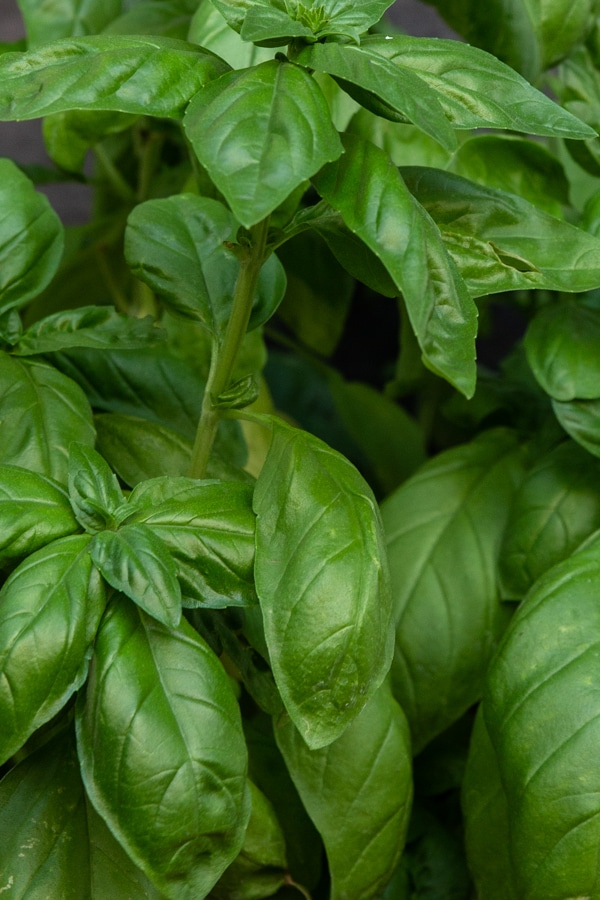
How to store the dried spices
It is best to store the dried herbs in glass jars tight screw caps, they should be stored in a cool dry pantry. It is best to avoid humid places and too much light. They should keep for up to 6 months.
Different dishes to use the spices with
Herbs have always been used in cooking, they flavor dishes and liven up many different recipes. Each herb, whether used singularly or with others can make a dish.
You can use them in sauces and dressings, to give flavor to meat or fish or to season vegetables and even desserts! Here are a few recipes using fresh and or dried herbs for you to enjoy. Buon Appetito!